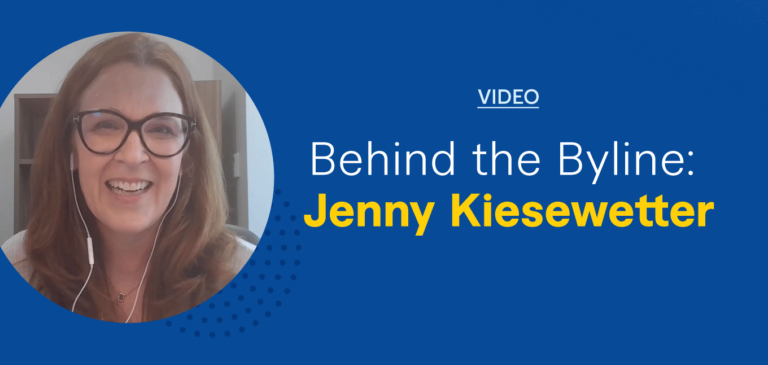Since business owners often double as content marketers, reading will improve your craft and help you gain inspiration. When you reflect on your favorite authors or even the brands you admire for their work, they likely have one talent in common: they are killer storytellers.
While ‘storytelling’ is a buzzword these days, it describes a branch of strategy that’s worth exploring called anecdote marketing. As you can guess from the name, this is when companies tell short tales — aka an anecdote — as part of their content initiatives.
No matter the industry or the goal, connecting with consumers and potential customers on a human level will make them more likely to convert or take action. Here, we explore this effective tactic and offer valuable insights on including this messaging technique in your work.
Anecdote marketing uses storytelling to connect with customers
Anecdote marketing is essentially incorporating strong storytelling into campaigns or your content, says Paulina Galoostian, the co-Founder of Tella Nails and the associate director of influencer marketing at Who What Wear.
“With successful anecdote marketing, your consumer will walk away with a clear message, which means to have strong storytelling, you need to have a strong narrator or point of view,” she continues.
Anecdote marketing can take form in many ways, including:
- Video campaigns.
- Social media stories and posts.
- Blog content.
- Personalized newsletters.
- The ‘about’ section on a website.
The goal is to use the personal background to connect with the customer on a deeper level. Many times, anecdote marketing has a target audience in mind, from new parents and retirees to entrepreneurs and so on.
Why is anecdote marketing meaningful to content strategy?
Savvy content marketers can catch a customer’s attention, earn their trust, motivate them to take action, and then continue to support a brand and/or product by remaining loyal.
Though all parts of the lifecycle require different techniques, anecdote marketing is beneficial in the customer relationship’s beginning stages.
As Akin Adebowale, the co-founder of Blacktag, puts it, anecdote marketing is impactful because it helps build deeper and stronger connections with core audiences by allowing them to envision how the product or service fits into their lives.
“Many consumers are now seeing through the performative marketing strategies, campaigns, or social initiatives many brands have taken part in recently,” he continues. “We see a lot of brands capitalizing on social media moments for their own gain, playing on trends and being reactionary, which just doesn’t resonate with audiences.”
However, with anecdote marketing, you meet customers exactly where they are, highlight their needs and offer solutions without being self-centered on the brand.
2 impressive anecdote marketing examples
Adebowale says people react to and connect with brands that tell an authentic story and develop a real perspective on a topic that fits with a larger mission.
As an example, Galoostian says Nike is notorious for creating these powerful messages through short yet powerful videos. Most recently, they released a video highlighting pregnant athletes as they trained through each stage of gestation.
Not only was it shared by expecting moms, but children resonated with the snippets since many see their mothers as superheroes.
“Nike has brilliantly tapped into anecdote marketing for years. They consciously focus on the narrative/narrator of the story to tap into the consumer’s ethos,” she adds.
Another example is Maybelline’s decision to cast Manny Gutierrez as the first male star of the ‘True Match Foundation campaign in 2016.
“This told a clear story: makeup is not just for women. This empowered male, female and gender-free consumers and content creators to try these brands, resulting in sales,” Galoostian continues. “This clearly showcased we support all genders, which was something their competitors could not demonstrate in their marketing.”
How to use anecdote marketing
To start investing in anecdote marketing, experts say it’s essential to take a few steps to pinpoint your campaign’s right direction. They include:
- Work with diverse influencers to bring your story to life.
- Always tie back to the larger mission.
- Find brand ambassadors who have interesting, genuine, and niche backgrounds.
- Make it digestible.
- Tell the founder story.
Work with a diverse community to bring your story to life.
Since most anecdote marketing provides a human experience, you need, well, humans to tell these stories. Whether it’s the byline on a blog post or the face of a video campaign, Galoostian says it’s vital to consider ethnic diversity, body diversity, location diversity, and other factors to reach as many people as possible.
As she explains, if you don’t approach a variety of different people from varied walks of life, your delivery can come across as siloed or inconsiderate.
For example, she says if you’re building the content strategy for a fashion company that’s coming out with a jacket in October, think about the geographical variants of shoppers.
“Consider working with an influencer in Los Angeles and an influencer in New York to see how each would style the look,” she continues. “Clearly, the styling would be different since the weather in those two locations is drastically different in October. This way, your consumers can be inspired on how they should style the coat depending on where they live.”
Always tie back to the larger mission.
In the Nike example featuring expectant mothers, the focus was the message that women are still athletes and can do anything. This promoted equality and brought it back to Nike’s mission to inspire communities to move and remain active.
With anecdote marketing, Adebowale says it’s vital to ensure the initiative always ties back to its larger mission and with the core audience. While you make and tell dozens of stories, they should relate to the business’s goals and values.
“The message of your story should outlast a single campaign and be something you can continue to identify your brand with as you grow,” he adds.
Find brand ambassadors with genuine and niche backgrounds.
Another way to approach anecdote marketing, according to Galoostian, is to create an ambassador program where you tap into the networks and followers of various influencers, celebrities, and so on.
While most of these opportunities will be through paid campaigns, they can tell a brand’s story in their own unique style, capturing the niche communities they’ve cultivated. “Weave in your brand ambassadors to your marketing initiatives so they can become the narrators,” she adds.
Tell the founder’s story.
One of the lowest-hanging fruits of anecdote marketing is the founder’s story. After all, entrepreneurs are often inspired to blaze their own trail after a life-changing event or seeing a need that needed to be filled. To start putting together the background of the leader of a company, Galoostian suggests asking them these questions:
- Why did you start the brand?
- What is the goal of the company?
- How is the company different?
- How have you been personally inspired by customers?
“It’s an ethos story that resonates well with consumers and makes them want to support the founder, not just the product. You can do this with interviews, podcasts, blog posts,” she adds.
They should all have a home on your website and/or blog and be a place where they continuously connect on the first-person level with their customers and fans.
Make it digestible.
With so much content, so much competition, and too much choice paralysis, it’s the brands that stand out that are successful. In other words, a story through anecdote marketing techniques can break through the clutter much more quickly than an ad or a promotion because it sticks with them, says Minna Khounlo-Sithep, the co-founder of The Product Boss.
“Your customer can see themselves in the story and actually visualize how that product would potentially help them transform a problem into a solution or resolve a pain point in their own life,” she adds.
However, she notes that many business owners hear the word ‘anecdote’ or ‘storytelling,’ and it can feel daunting because we think it needs to be elaborate stories or long narratives, but it doesn’t.
Instead, she suggests making it digestible. After all, customers have short attention spans, so keeping it shorter is better.
“Think of it as collecting mini-stories that you can pull from when you are talking about your products in conversation, video, social media, or email,” she continues. “Sharing stories on your social media of gift-giving ideas and stories of customer reasons for buying is a great way to implement anecdote marketing and to engage with your audience.”
Need anecdotal marketing content to help connect with your customers? Talk to a content specialist at ClearVoice today.






